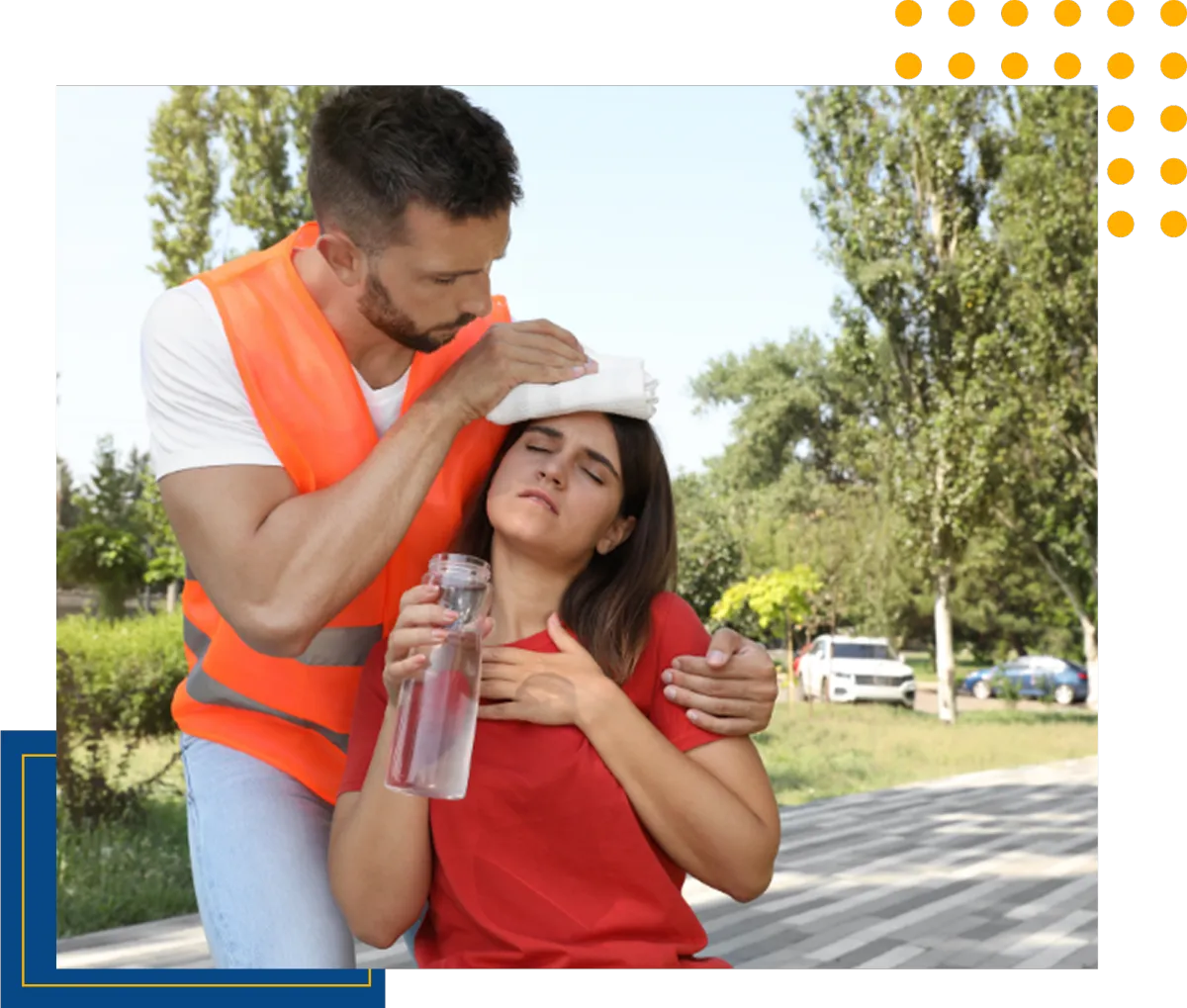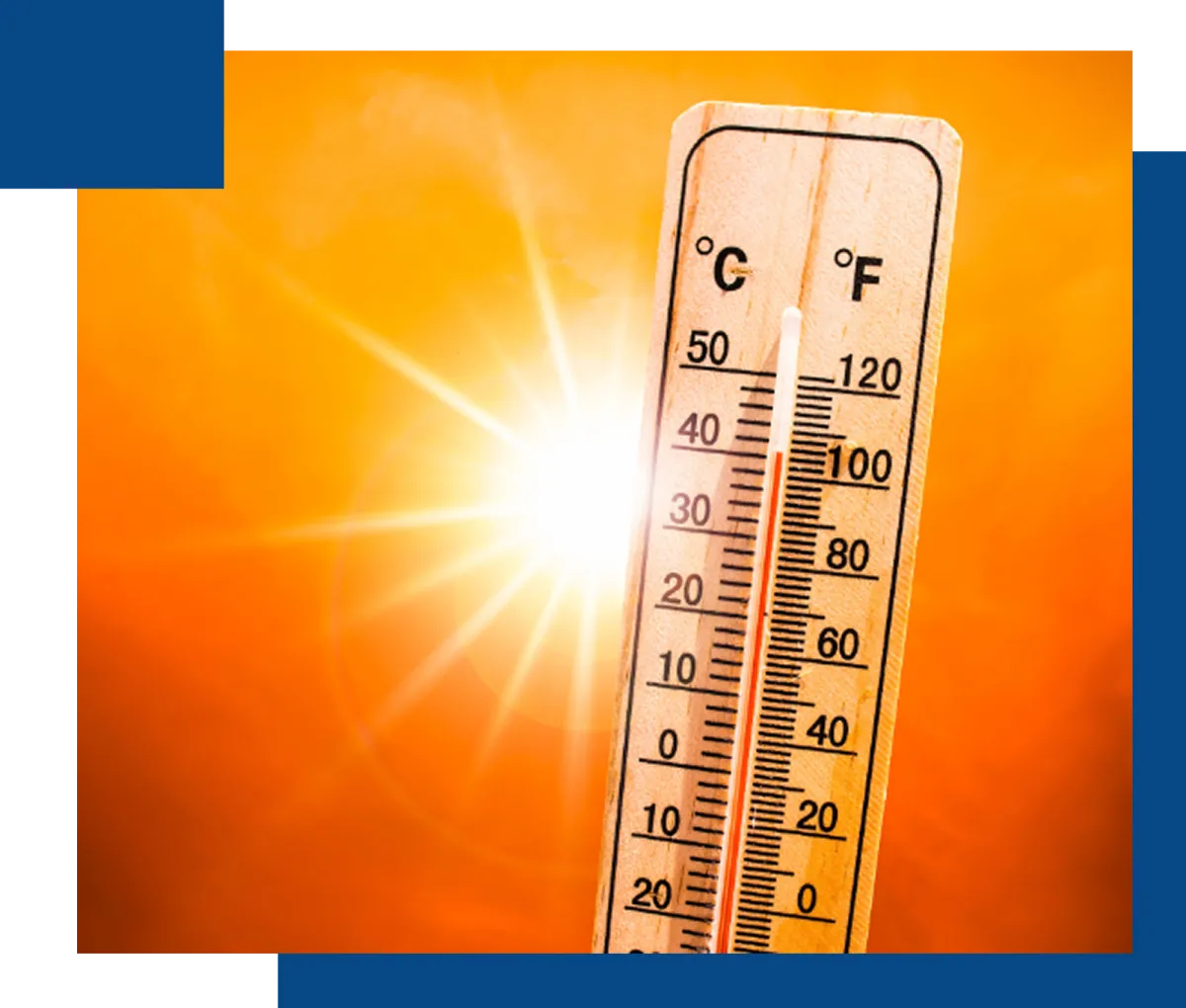

(828) 471-4317
Now Offering Spanish Safety Training!

Now Offering Spanish Safety Training!
OSHA’s Proposed Heat Illness Prevention Rule in 2025: What to Know
Heat Illness Prevention
Where OSHA’s Proposed Rule Stands in 2025

OSHA’s proposed Heat Injury and Illness Prevention Standard would set a federal baseline for protecting indoor and outdoor workers from dangerous heat. The rule is still in the proposal stage, but it outlines requirements employers must follow when temperatures or heat index values meet thresholds.
OSHA held an informal rulemaking hearing from June 16 through July 2, 2025, and then opened a post-hearing comment period. That period has been extended into the fall of 2025. A final rule is not yet issued, but employers should prepare for compliance steps now.
Broadly, the draft standard creates two tiers of protections: an initial trigger at lower heat levels and a high-heat trigger with stronger controls. Expect written plans, training, acclimatization, water and cool-down areas, observation for symptoms, and scheduled rest breaks when the higher trigger is reached.

Key Thresholds and Required Controls
Under the proposal, employers may monitor either heat index or wet bulb globe temperature. The initial trigger occurs at a heat index of 80°F (or the NIOSH Alert Limit for WBGT). The high-heat trigger occurs at a heat index of 90°F (or the NIOSH Exposure Limit for WBGT), activating additional, time-based protections and closer observation of employees.
At the initial trigger, employers must provide readily accessible cool drinking water (targeting roughly one quart per employee per hour), allow and encourage paid cool-down rests, and ensure access to shade or an air-conditioned area. Employers must implement acclimatization for new and returning workers, keep effective two-way communication, train supervisors and employees, and, for indoor areas, apply feasible controls such as increased air movement, dehumidification, or air-conditioning to reduce heat exposure.
At the high-heat trigger, employers must issue hazard alerts, provide paid 15-minute breaks at least every two hours, and actively observe employees using a buddy system or supervisor/heat safety coordinator. Lone workers require reliable two-way communication and check-ins. Certain very hot indoor areas need warning signage. A written heat illness and emergency response plan is required, with monitoring logs and periodic evaluation of program effectiveness, and corrective actions documented after heat incidents.
Coverage, Exceptions, and Practical Boundaries

The proposal applies broadly across general industry, construction, maritime, and agriculture where there is a reasonable expectation employees will encounter heat at or above the triggers. Employers can select the heat metric they will monitor and must designate personnel to implement and oversee the program.
Limited exceptions exist. The draft exempts telework, sedentary office work, and indoor or vehicle environments consistently maintained below 80°F. It also excludes brief heat exposures of 15 minutes or less within any 60-minute period and certain emergency response activities as a primary job function only.
Even when an exception applies, employers should verify that work tasks and conditions keep exposures below the trigger and document that determination. If employees wear vapor-impermeable clothing or work near radiant heat sources, evaluate additional risk factors and adjust monitoring methods, controls, and training accordingly.
The proposal applies broadly across general industry, construction, maritime, and agriculture where there is a reasonable expectation employees will encounter heat at or above the triggers. Employers can select the heat metric they will monitor and must designate personnel to implement and oversee the program.
Limited exceptions exist. The draft exempts telework, sedentary office work, and indoor or vehicle environments consistently maintained below 80°F. It also excludes brief heat exposures of 15 minutes or less within any 60-minute period and certain emergency response activities as a primary job function only.
Even when an exception applies, employers should verify that work tasks and conditions keep exposures below the trigger and document that determination. If employees wear vapor-impermeable clothing or work near radiant heat sources, evaluate additional risk factors and adjust monitoring methods, controls, and training accordingly.

To prepare, establish a written heat program that names a heat safety coordinator, defines your chosen metric (heat index or WBGT), maps indoor and outdoor areas, and sets activation rules for each trigger. Build temperature or forecast checks into daily planning, secure shaded or cooled break areas, stage cool water, and document equipment available for indoor cooling. Develop acclimatization schedules for new and returning workers and include contractors who routinely perform work on your sites.
Next, train supervisors and employees before heat season and annually on symptoms, first aid, reporting, and the right to take paid cool-down rests. Create job-specific emergency response steps, designate who calls medical services, and practice drills. Align procurement and staffing with the plan: thermometers, shade structures, hydration logistics, and observer coverage. Keep monitoring logs and program reviews. Nain & Associates offers English and Spanish training, site audits, and development to help you launch confidently now.
Enforcement Reality and Timeline
Although the rule is not final, OSHA continues heat-related inspections under its National Emphasis Program and cites hazards using existing standards and the General Duty Clause where appropriate. That means employers already face enforcement risk when heat controls, training, hydration, and medical response are inadequate. Implementing a solid program now reduces exposure to citations and, more importantly, lowers the likelihood of serious heat illnesses, particularly for new or unacclimatized workers performing strenuous tasks.
Procedurally, the agency will review testimony and post-hearing submissions, evaluate economic and technical issues, and may revise the draft before issuing a final rule. Any final standard could include phased implementation, giving employers time to update plans, training, and infrastructure. However, many core elements—water, shade or cooling, breaks, acclimatization, observation, and emergency response—are feasible now and consistent with widely accepted industry guidance.
State plans add layer. Several states require heat illness prevention in certain sectors, and others issue heat alerts during extreme weather. A federal standard will create a baseline across jurisdictions, but employers working nationally should track state requirements. Align your program to meet the strictest applicable rule, then use local procedures to address unique conditions, such as indoor radiant heat, high humidity, or outdoor shifts.
What Your Written Plan Should Include
A written Heat Injury and Illness Prevention Plan should identify work, the heat metric used, thresholds, controls, and roles. Name a heat safety coordinator. Explain how the company will measure and record conditions and how it will notify crews when the trigger is expected soon.
Include employee participation when building procedures, and ensure training reaches workers and supervisors before assignment to hot work and annually. Training should cover symptoms, first aid, acclimatization, hydration, break rights, and emergency contacts. Provide materials in languages employees understand; Nain & Associates delivers Spanish training.
Document monitoring and activation decisions; keep records to evaluate effectiveness. Map cool-down areas and water locations, and post signage. Coordinate with scheduling and contractors so observers and supervisors are available during high-heat periods. Define who calls medical help and direct responders to work areas effectively.

Construction, manufacturing, warehousing, schools, municipalities, and agriculture each face different heat drivers—direct sun, process heat, enclosed bays, PPE, or shift timing. Nain & Associates can tailor your plan to the work: mapping microclimates, selecting practical indoor controls, structuring rest cycles around production, and aligning supervision and staffing to observation needs. We also build onboarding and seasonal kickoffs so new and returning workers acclimatize safely without overloading schedules, while documenting decisions managers can defend during inspections.
Our team includes OSHA-authorized trainers and board-certified safety professionals who deliver English and Spanish classes, toolbox talks, and supervisor coaching. We conduct mock OSHA inspections, program gap reviews, and job hazard analyses focused on heat. If you need rapid mobilization, we can deploy on-site safety professionals for projects or peak seasons. Ready to build or refresh your program? Call (828) 471-4317 or request services to start a practical, defensible approach before temperatures climb again today.
Takeaways and How Nain & Associates Can Help
Bottom line: the proposed federal heat standard would require employers to formalize planning and apply escalating controls when conditions reach defined triggers. You do not need to wait for a final rule to act. The foundational elements—water, shaded or cooled breaks, acclimatization, observation, training, and emergency response—are well understood, reasonably attainable, and already expected by regulators during heat waves and peak seasonal work.
Start with a brief risk assessment: where do indoor operations trap heat, which crews are most exposed, and which controls are practical at each site? Choose your metric and build a simple monitoring routine. Stage water and shade, define breaks per trigger, and train supervisors to recognize symptoms, intervene early, and document actions. Integrate contractors and temporary labor into the same procedures.
Nain & Associates can accelerate this work with site-specific plans, bilingual training, and on-site audits that mirror OSHA’s approach. We help you define triggers, select feasible controls, and build clear, defensible procedures supervisors can actually use. Whether you manage one facility or a multi-state footprint, our team can align heat protection with your production goals, budgets, and risk profile—so your crews go home safe, and your program stands up during inspections and client prequalification requirements.
Have Questions About What We Offer?
To learn more about our services, contact us today!
Have Questions About What We Offer?
Contact us to learn more about our services

Speak with a
safety Specialist
Workplace Safety Training & Consulting Experts for
Charlotte, Hickory, Asheville, North Carolina and
the Southeast for since 2005!
Design By: Customers.Plus
© 2025 | Nain & Associates LLC


